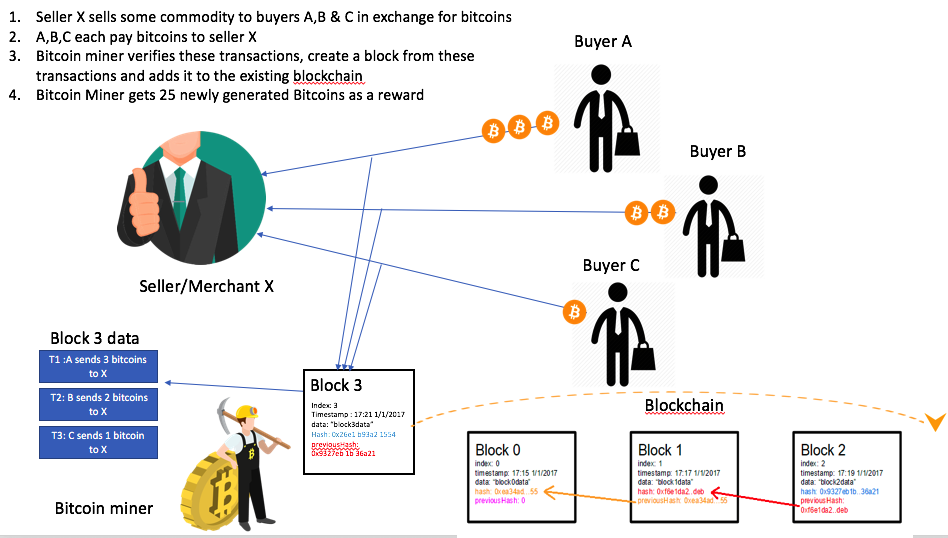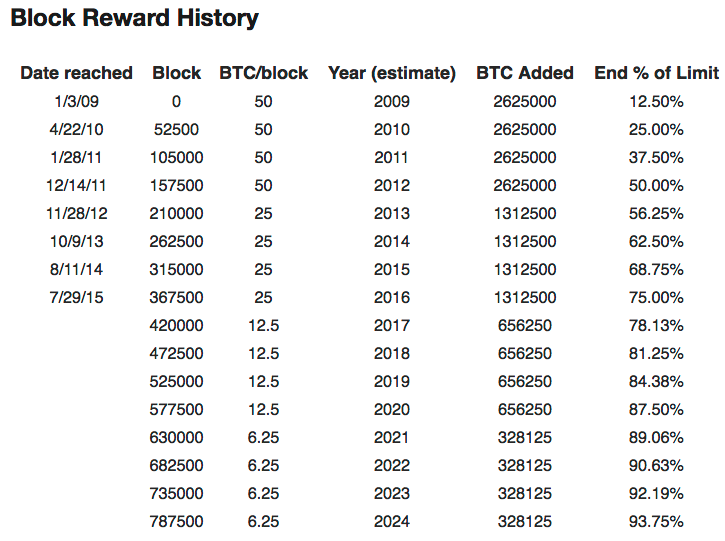The objective of this post is to explain bitcoins and blockchain technology without going deep into technical details, but uncovering it enough to understand the baseline logic & concept.It also aims at analysing the economic impacts and business opportunities of this technology.
What is a Bitcoin?
Bitcoin is a digital currency which, unlike cash, is not backed by any government or central bank. It can be bought and sold by individuals through different available apps (eg. Zebpay) and can also be used as a payment method at some e-commerce sites.
What is a Blockchain?
Bank take money from A in the form of a deposit and gives it to B in the form of a loan.
In this process bank makes money from the difference in the interest it charges from B and the interest it pays to A (lending rate > deposit rate). But why cant A directly give the money to B ? Why do they let the bank make money unnecessarily?
That is because of trust. A & B do not trust each other and they need a third party as a proof of this transaction happening. Here is how blockchain comes into picture. Blockchain is a technology which provides trust and allows A & B to transact directly.
Wondering how?
Blockchain is a digital public ledger in which all the transactions (eg A gives $100 to B) are stored. As it is public, this transaction information will be available to everyone in the network and thus A will have a proof in case B is unable to repay and A can file a case with that proof. But if everyone is able to see the transaction, you might think that is it not secure. Thats where the catch is. All the transactions are stored in encrypted form and thus maintain privacy.
What does this Blockchain look like? Blockchain consists of several blocks and each block, which holds a certain number of verified transactions, is linked to a previous block , using a hash number, and this is how a chain is created. (depicted in figure below)

As you can see, each block is linked to the previous block using a hash address and each block consist of a list of transactions.
Who generates these bitcoins & how did they come into picture in the first place?
First bitcoins were generated in January 2009 as a reward to Satoshi Nakamoto when he mined the first block of bitcoins ever. He received 50 bitcoins as a reward for creating the first block. Today also, new bitcoins get generated every time a bitcoin miner creates a block and adds it to the blockchain.
Confused? Lets see how the whole process works in detail:

In the above diagram, lets say seller X is an E-commerce merchant. He sells goods to Buyer A and A pays 3 bitcoins to him. Similarly , he sells goods to B & C of value equivalent to 2 and 1 bitcoin respectively. These 3 transactions will get added to the digital public ledger by the bitcoin miner. Bitcoin miners are no one but volunteers who take up the task of verifying these transactions , creating blocks by grouping these transactions and adding them to the blockchain network. Why do they do it? They get rewards in the form of bitcoins. The act of verifying a 10-minute block of transactions generates 12.5 new Bitcoins for the miner. Aha! this is how new bitcoins get added to the network.
But if miners keep on mining and bitcoins keep getting added at the same rate , wont it cause problem of excess supply of bitcoins? Yes it will, that is why the number of bitcoins generated per block is set to decrease geometrically, with a 50% reduction every 210,000 blocks, or approximately four years. The total number of bitcoins in existence is not expected to exceed 21 million. Thus, there is an upper limit on the number of bitcoins that will exist in the economy. Wondering who controls this process? The cutting down on reward after every 210,000 blocks ? And limiting the total no of bitcoins to be generated? All this is done by no central authority but the algorithm (designed by Satish Nakamoto) itself. Checkout the history of bitcoin rewards over the years:

Economic Implications:
- The current scale of Bitcoin usage is too small to significantly impact the Fed monetary policies or the flow of any national currency. Bitcoin’s scale of use remains that of a “niche” currency. During 2014, total Bitcoin daily global transaction value fluctuated in a range of between $40 million and $60 million. Whereas in June 2014, the US Money Supply (currency, DDs, saving deposits including money market savings accounts) was about $11.3 trillion.
- Keynesian economists argue that deflation is bad for an economy because it incentivises individuals and businesses to save money rather than invest in businesses and create jobs. In simple terms, if the virtual currency is deflating i.e. its value against dollar/goods in the market is strengthening, something like this – 2016: 1B = $100 , 2017: 1B = $200 , 2018: 1B = $300 (Note that these no.s are hypothetical used just to explain the concept), then bitcoin holders would want to hold on to their bitcoins rather than investing them. This is bad for the economy as a whole.In case of bitcoins, because the monetary base of bitcoins cannot be expanded, the currency would be subject to severe deflation if it becomes widely used.
- Another concept which is likely to hinder the growth of Bitcoin is that of network externalities (i.e. the value of a product/good depends on the number of others using it). Network externalities create a tendency toward having one dominant currency and confer a substantial incumbency advantage to the dollar in both domestic and international use.Bitcoin currently does not pose a significant challenge to dollar as the principal circulating currency.
Business Opportunities:
Almost every business sector today is investing in this technology and exploring ways of implementing it into their business and cutting down their transaction costs. Lets take an example of FMCG supply chain.
Raw Material Supplier -> Manufacturer -> Distributor -> Retailer -> Customer
There is no doubt that in this whole process, numerous money transactions are incurred.Companies spend a lot of resources on paperwork/digital verification of these transactions. But if they implement it using blockchain and store every transaction on the digital public ledger, they can save tremendously on these expenses.
Similarly, every business deals with a significantly large amount of transactions and implementing this technology would help them in the long term.
All good and no harm?
Though this technology is built on a very strong encryption mechanism, but in the past there have been instances where hackers have been able to breach into its security mechanism and adversely impact bitcoin investors:
- January 2015: Bitstamp, a large European Bitcoin exchange, suffered a security breach involving a loss of 19000 Bitcoins, valued at about $5m, and thereafter suspended its services.
- 2013: Mt. Gox, the most popular Bitcoin exchange came under a series of massive DOS attacks mounted by hackers, resulting into a theft of ver $400 million. Mt.Gox declared bankruptcy after the incident.
- August 2012: An operation titled Bitcoin Savings & Trust was shut down, leaving around $5.6 million in bitcoin-based debts.
- Sept 2012: Bitfloor, Bitcoin exchange lost 24000 Bitcoins in a hack and suspended its operations.
Despite these attacks, this technology has huge potential and is likely to change the landscape of business transactions in future. I have provided some links below which might be helpful if you want to dig further.
Signing off!
If you found it helpful, please recommend 🙂
References:
1. https://fas.org/sgp/crs/misc/R43339.pdf
2.http://www.sciencemag.org/news/2016/03/why-criminals-cant-hide-behind-bitcoin
3.https://www.bitcoinmining.com/what-is-the-bitcoin-block-reward/